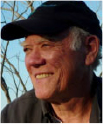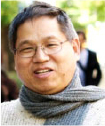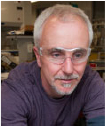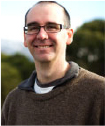New Year Editorial 2015
Curt WentrupEditor-in-Chief, Australian Journal of Chemistry School of Chemistry and Molecular Biosciences, The University of Queensland, Brisbane, Qld 4072, Australia. Email: wentrup@uq.edu.au

Curt Wentrup was educated at the University of Copenhagen (Cand. Scient. 1966 with K. A. Jensen; D.Sc. 1976) and the Australian National University (Ph.D. 1969 with W. D. Crow). After post-doctoral periods with Hans Dahn (Lausanne), W. M. Jones (Gainesville, FL) and Maitland Jones, Jr (Princeton, NJ), he held academic positions at the Université de Lausanne, Switzerland, and a professorship at the Universität Marburg, Germany, before returning to Australia in 1985 as Professor and Chair of Organic Chemistry and Head of the Organic Chemistry Section at the University of Queensland, where he is now Emeritus Professor. Since 2008, he has been the editor-in-chief of the Australian Journal of Chemistry, and he is the immediate-past chair of the National Committee for Chemistry. He has published over 350 research papers, reviews, and books on reactive intermediates and unusual molecules. He is a Fellow of the Australian Academy of Science, and a recipient of the Centenary Medal of the Australian Commonwealth (2003), the David Craig Medal of the Academy of Science as well as the A. J. Birch Medal of the RACI (2014). He collaborates strongly with research groups in Europe and was awarded an honorary doctorate from the Université de Pau, France, in 2014. |

Greg G. Qiao is a professor and Australian Research Council professorial Future Fellow in the Department of Chemical and Biomolecular Engineering at The University of Melbourne. In 1982, he completed his B.Eng. degree in polymer engineering at Donghua University, China, and in 1996 received his Ph.D. in synthetic organic chemistry from The University of Queensland. He then moved to The University of Melbourne, where he entered the field of synthetic polymer chemistry and engineering. He became a lecturer in the Department of Chemical and Bimolecular Engineering in 2002, and was promoted to Senior Lecturer in 2004, Associate Professor and Reader in 2007, and full Professor in 2009. Professor Qiao has published more than 150 journal papers and holds more than 16 full patents. His key research interests are in the synthesis of novel macromolecular architectures by controlled polymerisation, polymeric membranes for gas separation, polymeric scaffolds for soft tissue engineering, and functional polymers for specific applications in mineral processing, paint products, commercial packaging, and water mitigation. |

Associate Professor Martyn Coles received his B.Sc. (Hons) First Class from the University of Durham in 1992, and elected to stay in Durham for his Ph.D. studies under the supervision of Professor Vernon C. Gibson. He obtained a NATO Post-Doctoral Fellowship, which he undertook in the University of Iowa in the USA with Professor Richard F. Jordan. After a second post-doctoral stint at the University of California, Berkeley, with Professor T. Don Tilley, he joined the faculty at the University of Sussex, UK, in 1999, where he was promoted to Senior Lecturer in 2005. In 2011, he moved to the Victoria University of Wellington, New Zealand, where he is currently Associate Professor. |

Professor Michael Breadmore is an ARC Future Fellow (2013–2017) at the Australian Centre for Research on Separation Science (ACROSS) based at the University of Tasmania. His research interests lie in the application of capillary and microchip electrophoresis for the trace analysis of environmental, clinical, and forensic samples, as well as in methods for the low-cost fabrication of microfluidic devices. |
Australian Journal of Chemistry 68(1) 1-2 https://doi.org/10.1071/CH14678
Published: 19 January 2015
In this New Year Editorial, I would like to recapitulate some of the research fronts and special issues published in 2014. A research front based on the newly formed Sino-Australian Polymer Chemistry Mission was organised by Professor Greg G. Qiao (The University of Melbourne). The mission involved the visit of an Australian delegation to China in 2013 with Professor Meifang Zhu (Donghua University, Shanghai) as the leader on the Chinese side. Subsequently, Greg joined the editorial board of Aust. J. Chem. and will be responsible for handling some of the polymer chemistry papers.
The March issue contained 28 papers authored by participants in the 6th Heron Island Conference on Reactive Intermediates and Unusual Molecules, held in July 2013. These well attended and highly renowned conferences always spin off a series of high quality publications. The 7th Heron Island Conference (www.heron7.org), organised as usual by Craig Williams and myself, will be held from 9 to 15 July 2016, immediately following the IUPAC International Conference on Physical Organic Chemistry in Sydney (www.icpoc23.unsw.edu.au). The latter is organised by Jason Harper (UNSW) and associates.
The April issue contained a series of papers by participants in the 34th Australian Polymer Symposium (APS) held in Darwin in July 2013, and was guest-edited by Kevin Jack (The University of Queensland). It included topics such as polymer synthesis, characterisation, processing and modelling, and materials in health and medicine, energy, industry, and translational research. The 35th APS will be held from 12 to 15 July 2015 on the Gold Coast (www.35aps.org.au).
Uta Wille (The University of Melbourne) guest-edited a research front on physical organic chemistry in the May issue. As Dr Wille points out, modern physical organic chemistry encompasses much of supramolecular chemistry, molecular recognition, calculation of energy surfaces, structure reactivity correlations, and chemical and biochemical reaction mechanism.
The July issue was dedicated to the chemistry of guanidine, guanidinium, and guanidinate compounds – derivatives of H2N-C(=NH)-NH2 – and guest-edited by Peter Duggan (CSIRO, Clayton), Martyn Coles (University of Wellington, NZ), and Choon Hong Tan (Nanyang Technological University, Singapore). The importance of the guanidine functional group is reflected in contributions from several areas of research, including organic, inorganic, physical, and medicinal chemistry. Professor Martyn Coles has since joined the editorial team with special responsibility for organic chemistry.
The August/September issue of Aust. J. Chem. was dedicated to the memory of Roger F. C. Brown, formerly of Monash University, and contained over 30 papers in his honour. Experiments with low-pressure gas-phase pyrolysis, later to be known as flash vacuum pyrolysis (FVP), were started by Wilfred (Bill) D. Crow and Roger Brown in the Chemistry Department, School of General Studies, at the ANU in 1965.
The October issue contained a selection of papers authored by participants in the 4th Molecular Materials Meeting (M3@Singapore) which was organised by Dr Yun Zong and Professor T. S. Andy Hor of the Institute of Materials Research and Engineering (IMRE), Agency for Science, Technology and Research (A*STAR), and the National University of Singapore in January 2014. The M3@Singapore meetings are vibrant fora for exchanging ideas and learning about the latest developments in molecular materials research and technology. The 5th M3@Singapore (http://www.imre.a-star.edu.sg/page.php?n=Conference+Information&id=C532O535J536) will be held from 3 to 5 August 2015 to coincide with the celebration of Singapore’s 50th anniversary of statehood.
A research front on molecular magnetism in the November issue had its origin in a Southampton–Australia–New Zealand Workshop held in Sydney in February 2014 The workshop was instigated by Drs Tony D. Keene and Jonathan Kitchen of the University of Southampton, and it was specifically aimed at students at honours, post-graduate, and post-doctoral levels, who were exposed to the research of leading magnetochemists. This research front was guest-edited by Dr Suzanne Neville from The University of Sydney.
2014 was the International Year of Crystallography (IYCr), celebrating the award of the Nobel Prize for Physics to Max von Laue in 1914 for the discovery of diffraction of X-rays by crystals. In 1915, the Physics Nobel Prize was awarded to William Henry Bragg and William Lawrence Bragg for their chemically important discovery, made in 1913, that atomic positions in crystals can be determined from the diffraction patterns. The December issue of Aust. J. Chem. celebrates the IYCr with a research front of 20 papers guest-edited by Stuart R. Batten (Monash University) together with Bostjan Kobe and Luke Guddat (The University of Queensland).
I am pleased to note that Aust. J. Chem. has reached agreement with the RACI to invite all recipients of research-related RACI medals and awards to publish a highlight, review, or paper on their work in the Journal. The October, November, and December 2014 issues contained papers from several of the 2012 and 2013 RACI award winners. We are keen to make this an attractive, prestigious, free-access feature of the Journal, and I look forward to high-quality contributions from the recently announced 2014 RACI award winners.
Questions of open or free access, better access, and better visibility are being debated continuously. Aust. J. Chem. currently publishes several articles free access, including a monthly spotlight paper that is available to members on the RACI website (www.raci.org.au/resourcecentre/monthly-ajc-paper). The prestigious Beckwith Reviews are published free access (the second such review is in preparation), and we plan to do the same with RACI and AAS award papers. In addition, in honour of Sir John (‘Kappa’) Cornforth, who passed away last year, we are instigating a new Cornforth Review Series, which will also be published open access. The first such review will be published in a special issue dedicated to Sir John Cornforth this year.
I take this opportunity to welcome three new Associate Editors: Greg Qiao, Martyn Coles, and Michael Breadmore. Professor Breadmore (University of Tasmania) joined the editorial board with special responsibility for analytical chemistry (see the biographical sketches below).
I extend my best wishes to you, the readers, for a happy, successful, and enjoyable New Year, and in particular I thank the authors, the reviewers, the editors, and the CSIRO publishing staff for making it possible for us to publish high quality papers across the fields of chemical science. I am sure this will continue in 2015, the International Year of Light.


